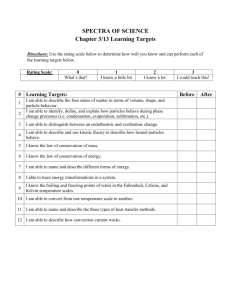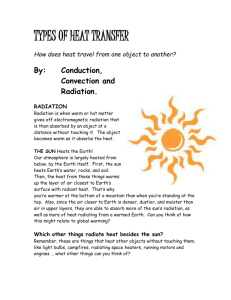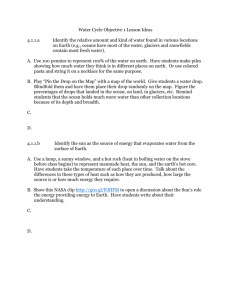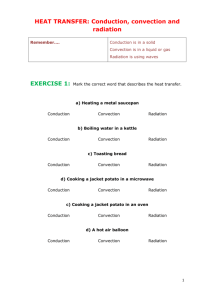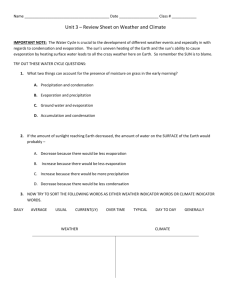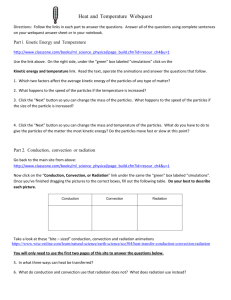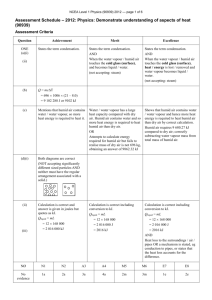10W Physics GCSE Revision 1.4-6
advertisement
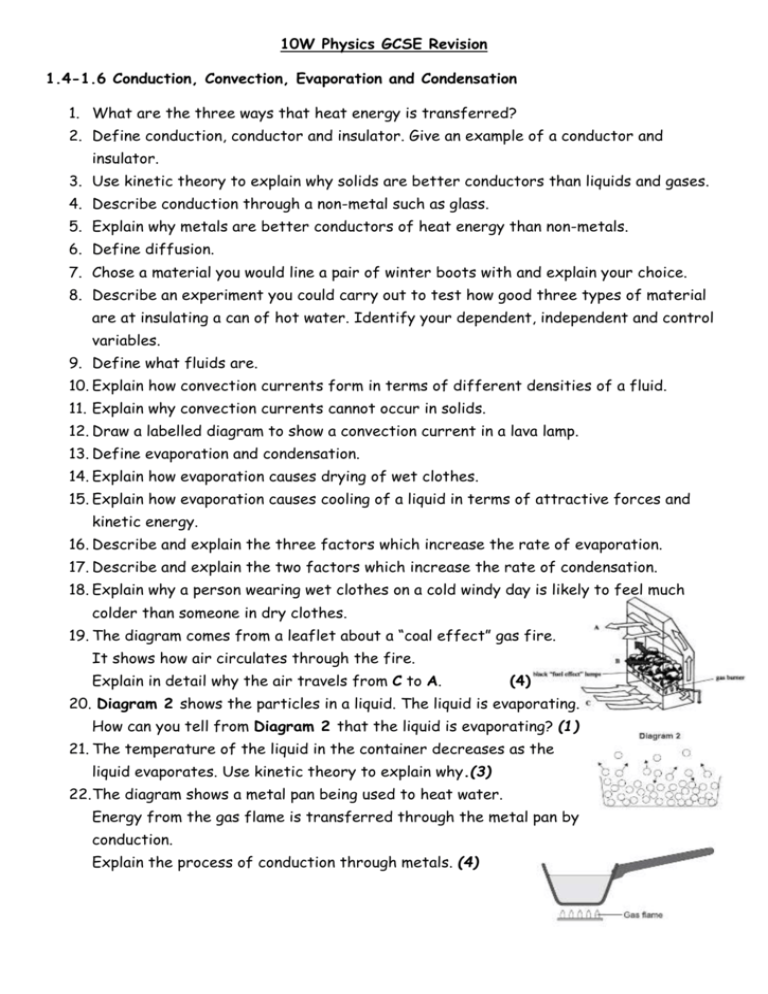
10W Physics GCSE Revision 1.4-1.6 Conduction, Convection, Evaporation and Condensation 1. What are the three ways that heat energy is transferred? 2. Define conduction, conductor and insulator. Give an example of a conductor and insulator. 3. Use kinetic theory to explain why solids are better conductors than liquids and gases. 4. Describe conduction through a non-metal such as glass. 5. Explain why metals are better conductors of heat energy than non-metals. 6. Define diffusion. 7. Chose a material you would line a pair of winter boots with and explain your choice. 8. Describe an experiment you could carry out to test how good three types of material are at insulating a can of hot water. Identify your dependent, independent and control variables. 9. Define what fluids are. 10. Explain how convection currents form in terms of different densities of a fluid. 11. Explain why convection currents cannot occur in solids. 12. Draw a labelled diagram to show a convection current in a lava lamp. 13. Define evaporation and condensation. 14. Explain how evaporation causes drying of wet clothes. 15. Explain how evaporation causes cooling of a liquid in terms of attractive forces and kinetic energy. 16. Describe and explain the three factors which increase the rate of evaporation. 17. Describe and explain the two factors which increase the rate of condensation. 18. Explain why a person wearing wet clothes on a cold windy day is likely to feel much colder than someone in dry clothes. 19. The diagram comes from a leaflet about a “coal effect” gas fire. It shows how air circulates through the fire. Explain in detail why the air travels from C to A. (4) 20. Diagram 2 shows the particles in a liquid. The liquid is evaporating. How can you tell from Diagram 2 that the liquid is evaporating? (1) 21. The temperature of the liquid in the container decreases as the liquid evaporates. Use kinetic theory to explain why.(3) 22. The diagram shows a metal pan being used to heat water. Energy from the gas flame is transferred through the metal pan by conduction. Explain the process of conduction through metals. (4) 10W Physics GCSE Revision 1.4-1.6 Conduction, Convection, Evaporation and Condensation 23. What are the three ways that heat energy is transferred? 24. Define conduction, conductor and insulator. Give an example of a conductor and insulator. 25. Use kinetic theory to explain why solids are better conductors than liquids and gases. 26. Describe conduction through a non-metal such as glass. 27. Explain why metals are better conductors of heat energy than non-metals. 28. Define diffusion. 29. Chose a material you would line a pair of winter boots with and explain your choice. 30. Describe an experiment you could carry out to test how good three types of material are at insulating a can of hot water. Identify your dependent, independent and control variables. 31. Define what fluids are. 32. Explain how convection currents form in terms of different densities of a fluid. 33. Explain why convection currents cannot occur in solids. 34. Draw a labelled diagram to show a convection current in a lava lamp. 35. Define evaporation and condensation. 36. Explain how evaporation causes drying of wet clothes. 37. Explain how evaporation causes cooling of a liquid in terms of attractive forces and kinetic energy. 38. Describe and explain the three factors which increase the rate of evaporation. 39. Describe and explain the two factors which increase the rate of condensation. 40. Explain why a person wearing wet clothes on a cold windy day is likely to feel much colder than someone in dry clothes. 41. The diagram comes from a leaflet about a “coal effect” gas fire. It shows how air circulates through the fire. Explain in detail why the air travels from C to A. (4) 42. Diagram 2 shows the particles in a liquid. The liquid is evaporating. How can you tell from Diagram 2 that the liquid is evaporating? (1) 43. The temperature of the liquid in the container decreases as the liquid evaporates. Use kinetic theory to explain why.(3) 44. The diagram shows a metal pan being used to heat water. Energy from the gas flame is transferred through the metal pan by conduction. Explain the process of conduction through metals. (4)
